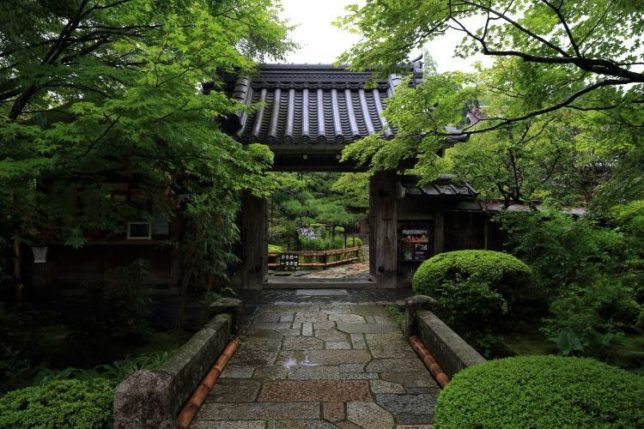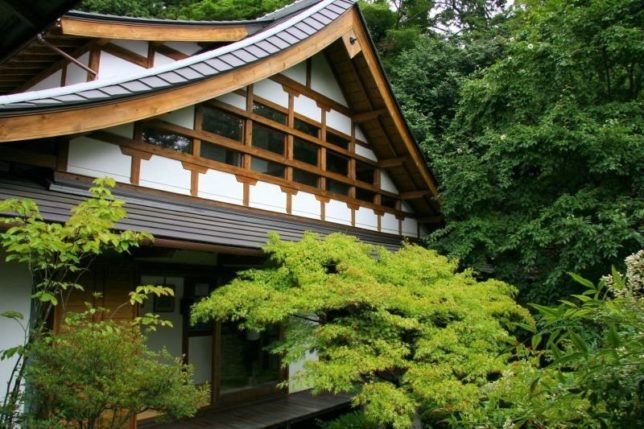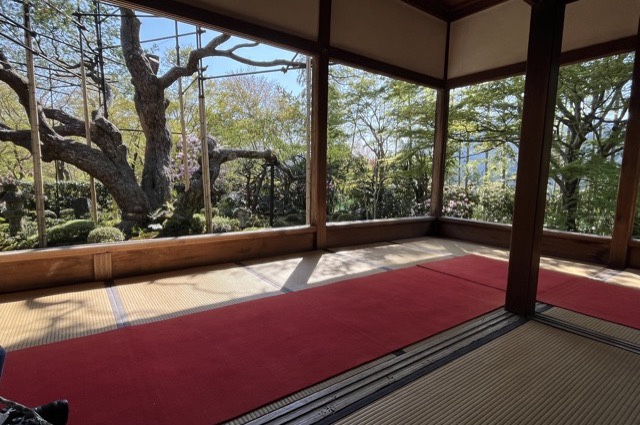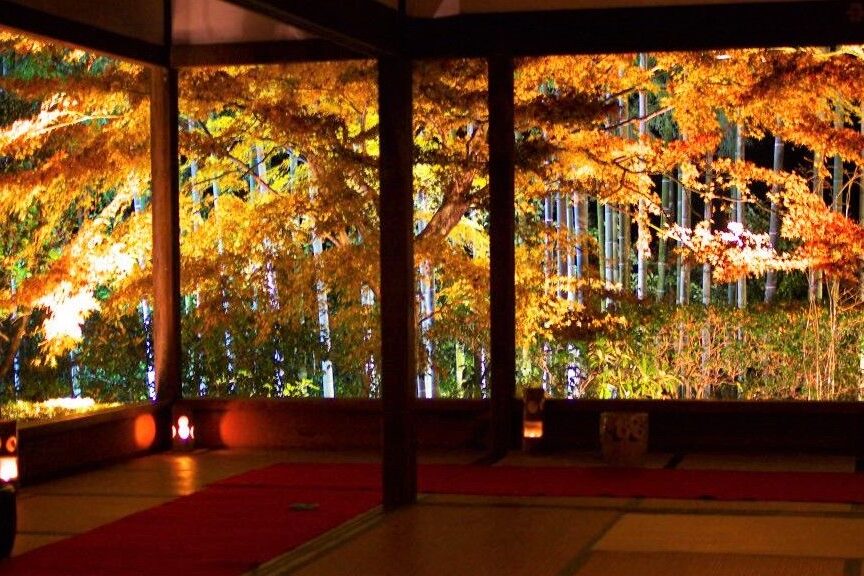One of the blood-stained ceiling temple, to offer peaceful and welcoming atmosphere with its stanning gardens.
Hosen-in Temple (宝泉院) is located in the north east of Kyoto, nearby the famed Ohara Sanzen-in Temple. The temple is known for its beautiful garden and autumn colors. Hosen-in was built in 1235 as a sub-temple by the head priest of nearby Shorin-in Temple, a Tendai sect of Japanese Buddhism. Originally Shorin-in was founded by the monk Jakugen in 1013. He is a follower of the monk Ennin (794-864) who introduced “shomyo”, Buddhist chanting to Japan. After the establishment of Shorin-in, Hosen-in, and other temples, Ohara became the center of shomyo in Japan.


Features
Blood-stained ceiling
Hosen-in is one of several “chitenjo” , blood-stained ceiling temples found in Kyoto, along with Yogen-in, Shoden-ji, Genko-an, and Kosho-ji. These blood-stained ceilings are made by blood-stained wooden boards taken from Fushimi Castle, after a 12-days brutal battle between Ishida Mitsunari, a military lord and the Tokugawa Shogunate loyalist Torii Mototada in 1600.
It is said that the battle ended in tragedy. Torii Mototada and 370 samurai warriors commited “harakiri” suicide as defeat was inevitable. Those blood-stained wooden boards with their blood were preserved to be later used for temples as a way of loyal act to memorialize those who gave their lives.
Hosen-in can be enjoyed all seasons, specially with autumn color.


Hosen-in provides a peaceful and welcoming atmosphere. After entering the main gate, visitors can stroll the garden with an ancient 700-year-old pine tree. Visitors can also have panoramic views out over the valley. Stone stepping stones lead you to a lower garden with moss-covered rocks stand before a bamboo grove. Along with flowering trees, Autumn colors and snow-covered, The gardens are striking in all seasons.


After strolling the gardens, visitors move into a Japanese tatami room with a view over an inner garden enclosed by a fence, and with the blood-stained wooden boards in its ceiling. A bowl of matcha green tea and a Japanese sweet are served here while enjoying the beauty of the garden and the transience of human life.
Address : 220 Oharashorinincho, Sakyo Ward, Kyoto, 601-1241
Access : By bus to Ohara Take The Kyoto bus No.17 from JR Kyoto station, or Demachiyanagi station on the Keihan main line to the Ohara bus stop, then walk about 10-minute. takes an hour and a bit in total.
The Kyoto bus No.16 goes to Ohara from Shijo Kawaramachi a very few times a day. (6.47am, 7.17am and 9.52pm).
Hours : 9:00 to 16:30
Admission : 800 yen with matcha green tea